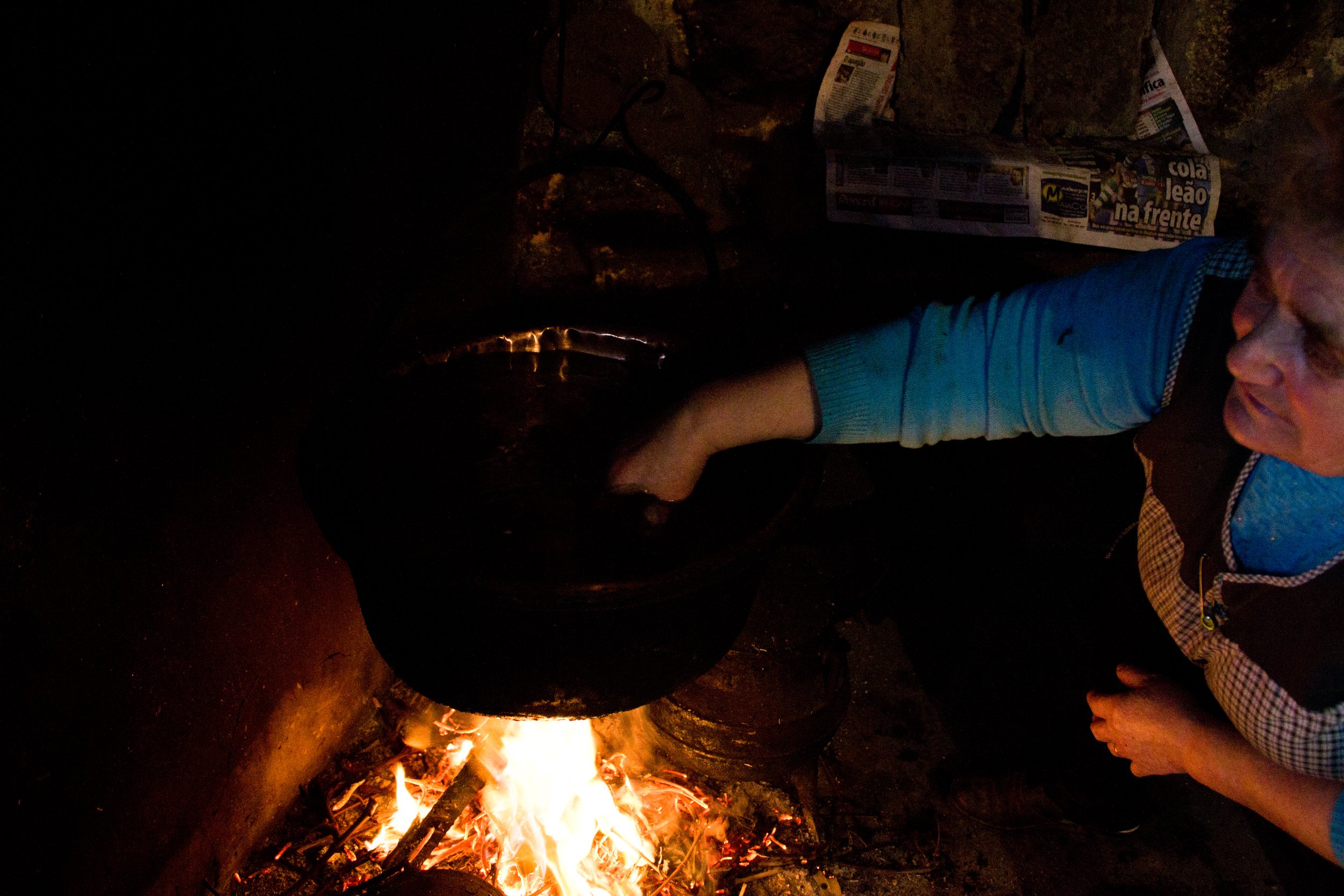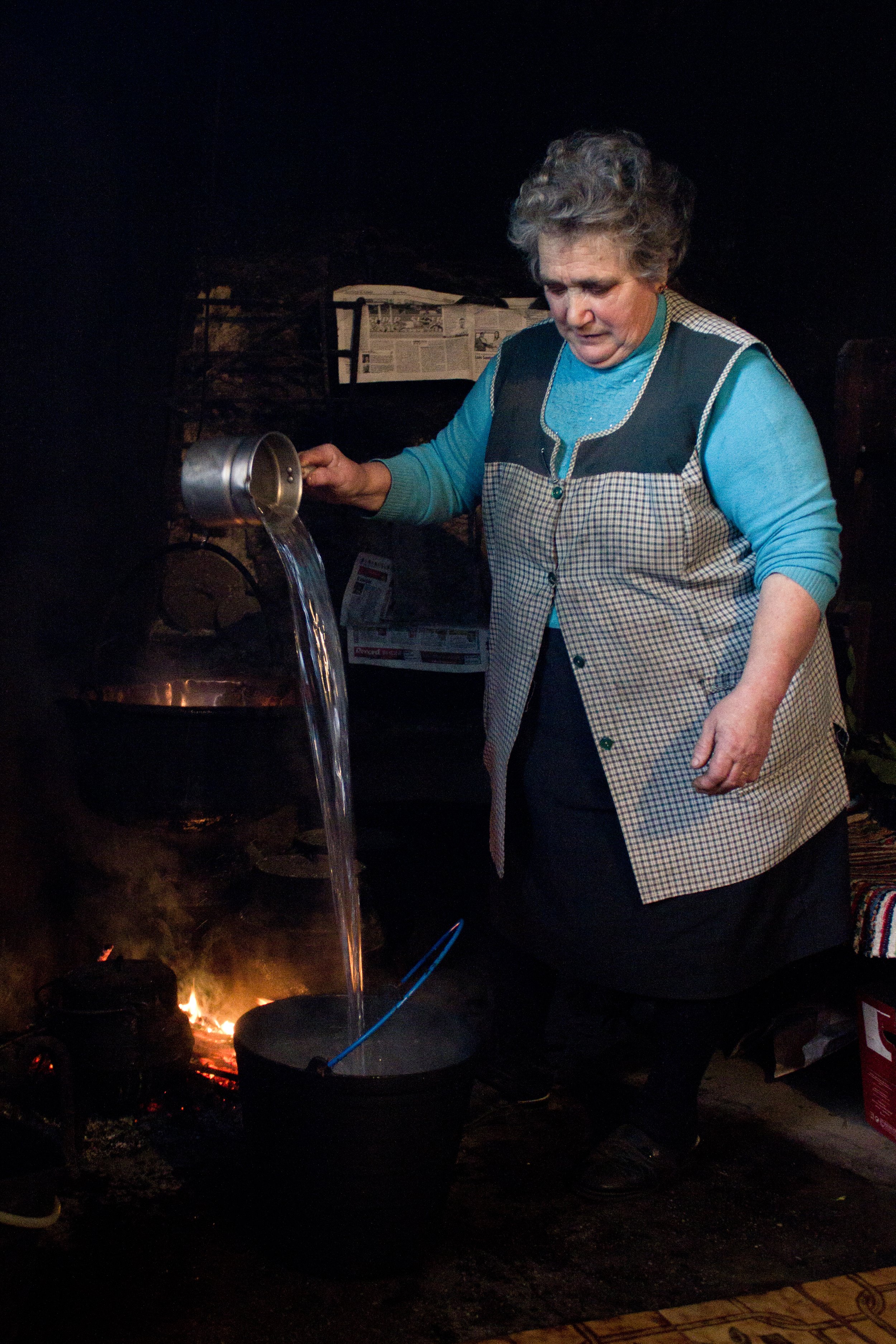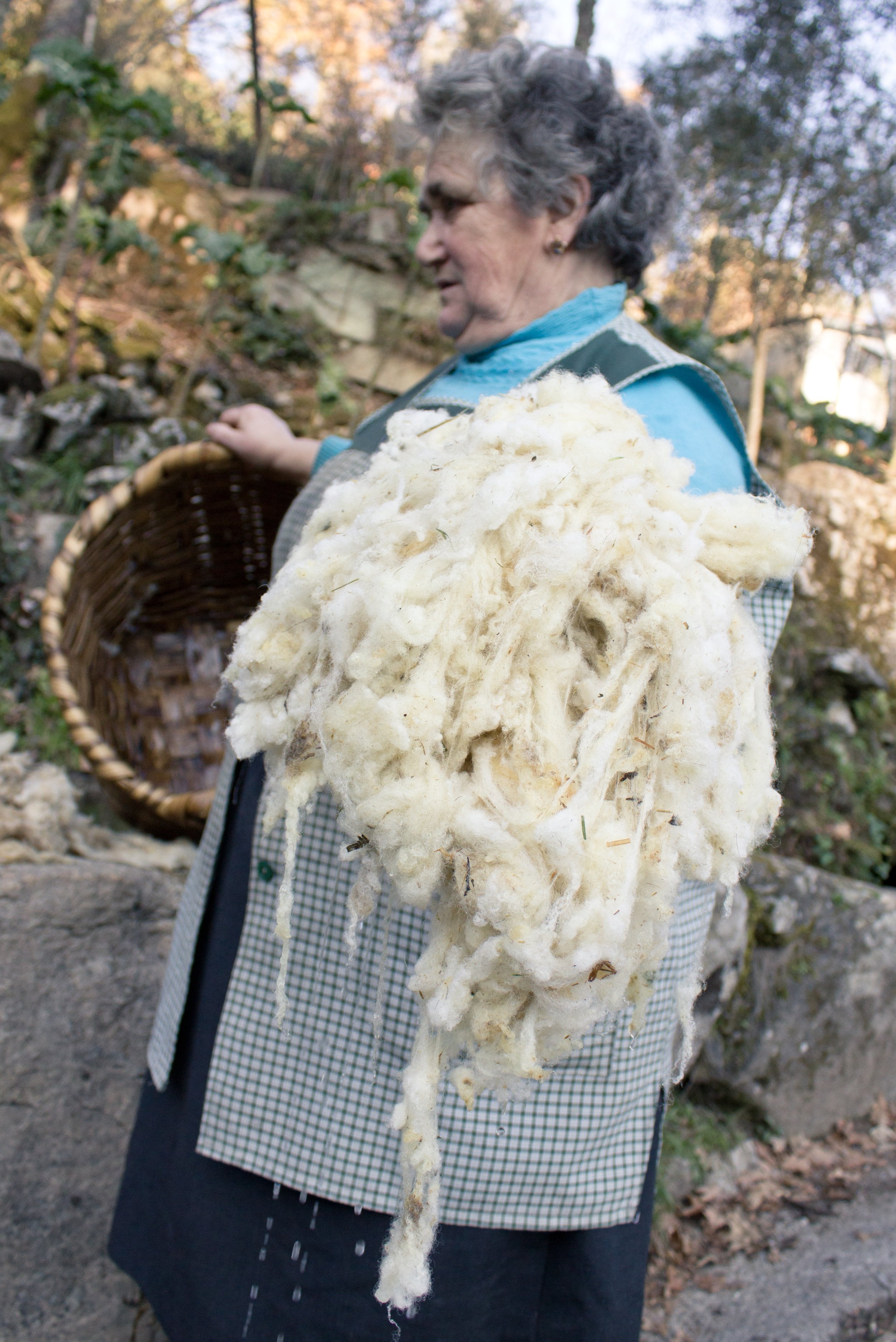Washing wool with D. Ilídia
At the beginning of January, I went to see D. Ilídia and together we washed a basin of wool, so that she could teach me how to do it properly. Washing wool is one of the seemingly simplest stages of the wool process, but for me it contains some wisdom. The fleece, in addition to the dirt it has accumulated throughout the year, is still impregnated with the sheep's natural fat, lanolin, so you need to know how to wash it properly in order to remove everything without using detergents or damaging the fiber.
It all starts in her kitchen, heating the water that will be used to soften the wool. The water was placed in a pot and heated over wood, with D. Ilídia controlling the temperature with her hand. You don't want the water too hot so that it doesn't fluff up the wool, just lukewarm. Once hot, it is mixed with a little cold water to reach the right temperature.
The raw wool is then placed in a basin and warm water is poured in. It can soak for just a few minutes or a few hours, as desired. The important thing is that it is not stirred too much, so that throughout this process it remains as loose as possible. The dirty water from this first pass is now poured off and the wool transferred to a basket of sticks to be transported to the river.
In the river or levada, the wool is gradually put into the basket, which is then immersed in the running water. The choice of a wooden basket is no accident, as it is permeable and allows running water to pass through, making washing quicker and more effective. If washed in standing water, for example in a tank or basin, the water would have to be replaced countless times, making the whole process much more time-consuming.
At this stage, the wool is gently stirred and the running water removes the mud. Throughout the process, the wool is always stirred gently, never subjected to high temperatures or great pressure, so that it remains as loose as possible - this will facilitate the later work of scutching, carding and spinning.
After washing, the wool is left to drain and finally dried. At the end of this stage it is ready to be opened and carded.






























